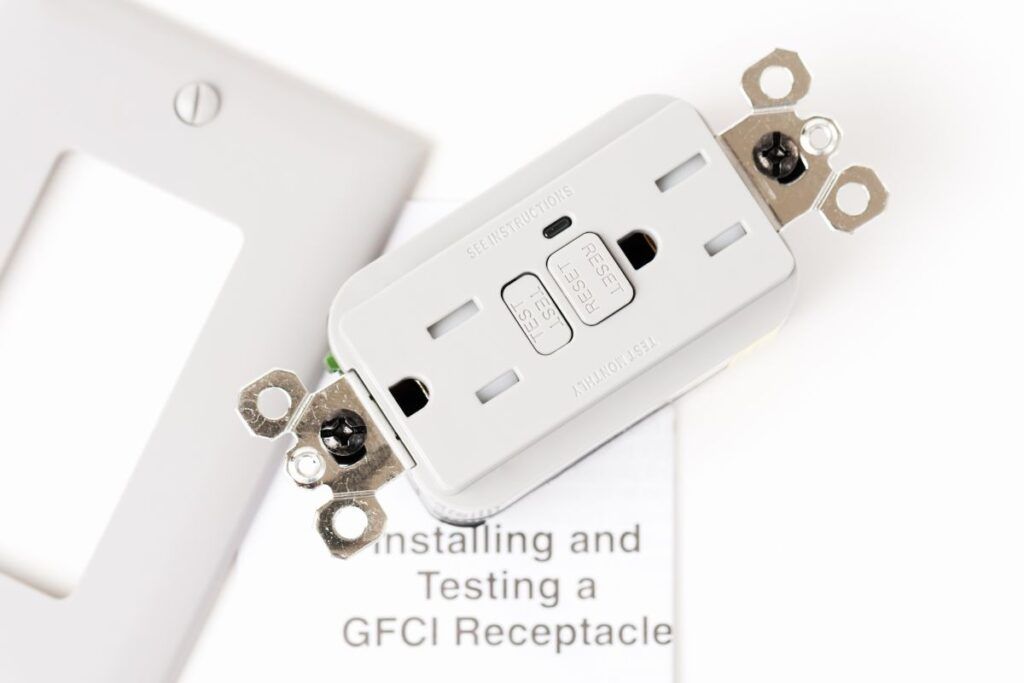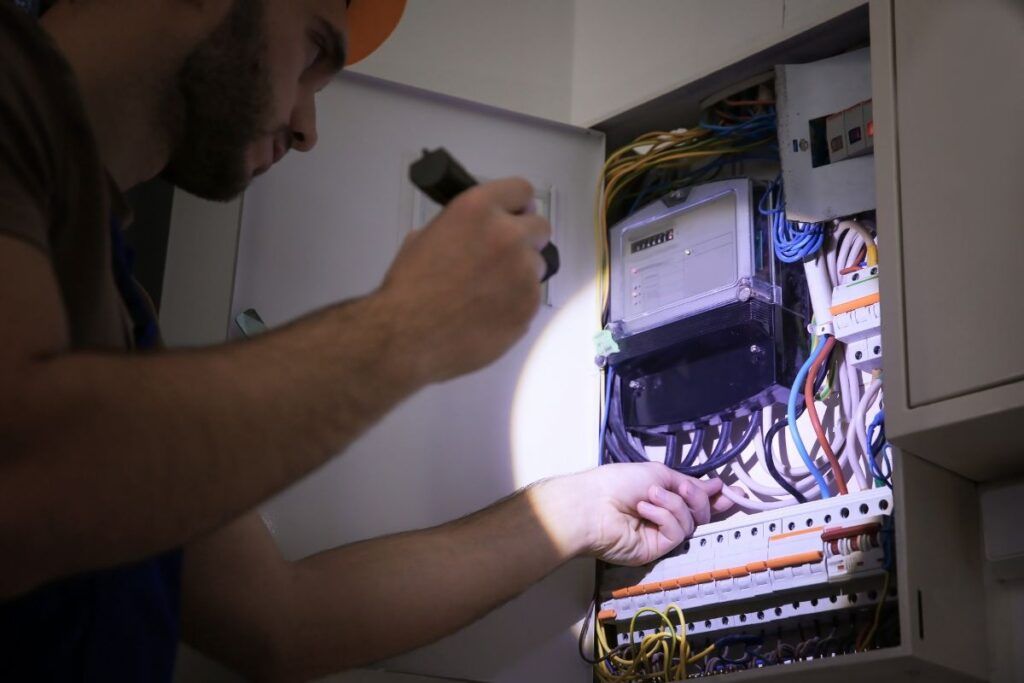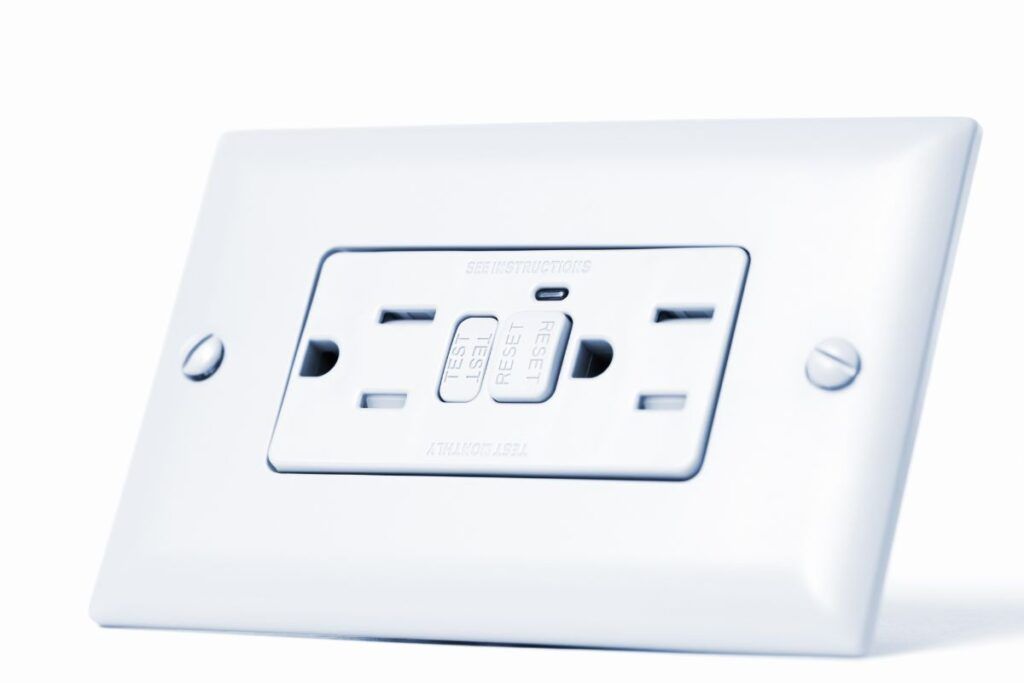The standard outlets in American houses are mostly GFCI because they are safe and protect you from electrical shocks. You can wire GFCI outlets together in a circuit, but wiring needs some considerations. This guide will focus primarily on how to wire them together.
To wire two GFCI outlets together, you must connect the incoming power source wires to the line terminals on the 1st GFCI, then use a pigtail to connect the line terminals of both GFCI. Next, connect the load terminals on the 1st GFCI to the downstream wiring, and do the same with the 2nd GFCI.
While wiring two outlets together, you must ensure they are properly grounded. This article will share the steps to install two GFCI outlets on the same circuit, factors to consider, precautionary steps while wiring two GFCI outlets together, and other alternatives, if any.

Check out our list of top-handpicked products for all your electrical, appliance, and HVAC system needs to keep your home running smoothly.
This post includes some affiliate links.What is a GFCI outlet, and why would you want to wire two outlets together?
The GFCI stands for Ground Fault Circuit Interrupter.
It is used in moisture-prone areas to prevent short circuits and accidents during a ground fault.
A ground fault occurs when the current escapes from the receptacle and takes an alternate path to flow across the neutral.
The GFCIs have a sensor that monitors the current flow through the hot and neutral wires.
When the ground fault across the hot and neutral wire occurs, the sensor will trip the breaker and shut off the power in the circuit.
It further prevents short circuits and fire hazards.
The GFCI also protects the devices connected to it and the other downstream outlets.
GFCI outlets are mainly used in moisture-prone areas like the kitchen, bathroom, garage, or laundry.
Whenever moisture enters the outlet, it senses danger and trips the breaker.
Wiring two GFCI outlets together is possible if they are on the same circuit.
Wiring them together protects against short circuits and fire accidents in areas that need extra protection and have a high electrical damage risk, for example, bathroom, laundry, garage, or other water-prone areas.
When you wire two GFCI outlets together, you receive an enhanced protection level for all the devices connected to the first GFCI.
The first GFCI outlet will protect the downstream devices by monitoring the electricity flow in the circuit.
Wiring 2 GFCI outlets together allow you to access safe and secure additional connections and sockets.
If one of the outlets goes wrong, you can still have the protection of the second GFCI outlet safely.
It ensures that the GFCI circuitry protects both the GFCI outlets.
Additionally, it can monitor the current flow of the outlets and circuit and trip when there is a danger.
Also read: GFCI Sparks When Reset: Is It Normal?
Tools and materials needed to wire two GFCI outlets together
Wiring two GFCI outlets to one circuit is accessible once you know the proper steps and have the right tools.
For the successful wiring of two GFCI outlets, you will need the following tools and materials:
- Two GFCI outlets.
- Wire strippers to strip off the insulation and connect them to the proper terminals.
- Needle-nose pliers to twist the wires and secure them together.
- Screwdrivers to unscrew and tighten the screws in the terminals and outlet boxes.
- Wire nuts to secure the exposed wire parts.
- Electrical tape to insulate the wire connections.
- A voltage tester to ensure no power runs when you start the wiring and ensure that the outlet functions well after you have finished wiring.
Safety precautions to take when working with electrical wiring

You must deal with electrical wiring when you work with outlets and wire them to the circuit.
Approaching outlet wiring without a proper idea of the wires is risky.
If you have experience, you can go ahead.
But as a beginner, you should leave it to professionals.
Here are some safety precautions to take while wiring two GFCI outlets together:
- Always turn off the power before you start working with outlet wiring. It stops the current from flowing through the wires and prevents electrocution.
- Avoid working near wet areas and keep wet or metal materials. Keep yourself dry.
- Wear protective gear, like goggles and insulated gloves, for safety.
- Test the wires again with a non-contact voltage tester to ensure no power is running through the wires.
- The outlets will need proper tools and materials for successful and secure wiring. Make sure that you have the right tools with you.
- Connect all the wires to the correct terminals, especially those that go to the LINE and LOAD terminals, and secure the connections. Double-check the connections to ensure there are no loose connections or ends.
- Use electrical tape or wire nuts to secure the exposed wire parts.
- Follow the manufacturer’s suggestions and manual for proper outlet wiring.
- Test the outlets after you have finished wiring to ensure the wiring is successful.
- If you are in doubt, call an electrician for help.
- Though you can wire two GFCI outlets in series, it is not advisable.
Also read:
- 8 Reasons Your GFCI Outlet Keeps Tripping Without Load
- Gfci Outlet Making Noise
- Why Does My GFCI Outlet Have No Power?
12 steps for wiring to ensure it is properly grounded
Wiring two GFCI outlets together is accessible if you know the right steps.
Along with proper wiring, you must ensure they are properly grounded.
There will be two different configurations – single-location and multiple-location.
In a single-location configuration, you will protect only the GFCI outlet itself.
In a multiple-location configuration, you protect the other downstream and GFCI outlets.
Each GFCI outlet will have two terminal sets – line and load.
Wiring two GFCI outlets to one circuit is safe, but there might be issues; for example, if one outlet doesn’t work, the other one may or may not function well.
It is because the two GFCIs are wired from the load output from the original one.
Here are the steps to wire two GFCI outlets together:
- First, turn off the power at the circuit that will power the outlets to prevent electrocution and accidents during the wiring. Confirm that no power runs with a voltage tester.
- Determine where you want to wire it and which outlet will be the first outlet and which is the second one.
- Strip off ¾ inch of insulation from the wire ends to connect them to the respective terminals.
- Identify the load and line wires. The line wires are the incoming power wires, and the load wires are the outgoing wires.
- Check the wires correctly. If you have one set of wires, you are in the circuit end and must use the single-location configuration. If there are two cables, pair the wires with color and use a pigtail wire to each pair, or connect them to the line and load terminals.
- For a single-location wire, connect the neutral and hot LINE wires from the power source to the LINE terminal of the first GFCI outlet and secure the connections.
- For a multiple-location, follow the previous step. Additionally, connect the load wires that power the downstream outlets or devices to the LOAD terminal of the first outlet.
- Connect a short wire as a pigtail or a jumper wire to the LINE terminal on the first GFCI and the other wire’s end to the LINE terminal of the second outlet.
- Now, connect the LOAD wires to power the outlets or devices on the circuit to the LOAD terminals of the second GFCI outlet.
- There will be a bare copper or green wire for grounding. Connect the wire to the green grounding screw of both outlets.
- Connect wire nuts and secure the wires by putting them back into the electrical box and securing the cover with screws.
- Turn back the power and test both the GFCI outlets for proper functionality. Press the TEST button on each outlet, verify the power is cut off, and press the RESET button.
It is better to wire the GFCI outlets in parallel because, in series, no protection remains once one outlet trips. The other one will also go off.
In parallel, if one outlet goes wrong, you can still have the protection of another outlet.
If you follow series wiring, the two outlets must be at opposite ends of the circuit.
In a series circuit, you don’t need a pigtail. Remove the pigtail and connect the first outlet’s wires with the second at the proper terminals.
I have two GFCI outlets wired together in my kitchen.
I was confused in the beginning and, thus, preferred calling an electrician.
I have known this process by sincerely following the electrician and repeated wiring.
You should call a professional for this work if you are a beginner.
Sometimes, it is not suggested to wire two GFCI outlets to the same circuit due to overloading risk.
But, if the circuit can handle the load, you can wire them in the same circuit.
Also read: GFCI Outlet doesn’t have power
Wiring multiple GFCI outlets on the same circuit: Things to consider

- Wiring 2 or more GFCI outlets on the same circuit is accessible. But there are a few things to consider, and below are those factors:
- Check the rating load of the circuit before connecting two GFCIs to it. The circuit should be able to handle the load of two GFCIs.
- Confirm that the wiring is done correctly to the LINE and LOAD terminals, depending on the single-location and multiple-location. Connect the ground wires properly in the outlet.
- Consider the location to ensure the outlets stay safe and secure.
- Ensure the outlets are installed at the opposite ends, especially if you plan to install them in series. However, it is not recommended to wire them in series.
- Check the load capacity of the GFCI outlets before installation to handle the load of the connected devices.
- Since the GFCI outlets will be wired together, make sure that the GFCI outlets are compatible. Otherwise, they might not function properly.
- Once you have connected the wires correctly, check the connections and test them to ensure they work fine.
Troubleshooting common issues when wiring GFCI outlets together
- Wiring two GFCI outlets together is possible, but you might face some issues during or after wiring.
- Below are some common issues and troubleshooting tips:
- Your GFCI outlets may trip immediately after installation. It can happen due to a wiring mistake, like reversing the line and load by mistake. Double-check the wire connections once again and reset your breaker. If the problem persists, contact a professional.
- You will see that only one outlet of the two GFCIs is protected, and the other is tripping. It happens because you have not wired that particular outlet correctly. Check the wiring of the outlet once again.
- The GFCI won’t trip when you test it to check the functionality. If the GFCI doesn’t trip during testing, you have a faulty GFCI outlet or wire issue. Replace the outlet or check the wire connections.
- The GFCI outlets may trip intermittently if there are any loose or wrong wire connections. Check the wiring to ensure everything is attached tightly and in the proper terminals. If everything is correct, replace the problematic outlet.
Alternatives to wiring GFCI outlets together: Other options for protecting your electrical system
- Though you can wire two GFCI outlets together, it is not considered safe, especially if you are wiring them in series.
- So, try other alternatives to secure your outlets:
- One best alternative is to install one GFCI outlet per circuit. But, the GFCI outlets are costlier than the standard outlets. If you can afford it, well and good. Otherwise, try other options.
- Install a GFCI breaker instead of multiple outlets and connect the outlets in the kitchen, bathroom, laundry, or garage to this breaker. One breaker will protect all the outlets connected to it.
- Install only one GFCI outlet and wire multiple other outlets to this outlet for GFCI protection. All the devices connected to those outlets will receive the protection of GFCI during ground faults.
Final thoughts
You can wire two GFCI outlets together in the same circuit. You can even wire them in series, but that is not recommended. To wire two GFCI outlets together, turn off the power at the circuit, identify the wires in the outlet, connect the LOAD and LINE wires to their respective terminals, connect the ground wire to the grounding screw, and test the connection.
While wiring two GFCI outlets together, check the circuit rating so that it can manage the two outlets and check the outlets’ rating to ensure they can hold the connected devices. Recheck the wire connections if you face issues like GFCIs tripping immediately or intermittently or if only one of the two is protected.
Try other alternatives, like installing GFCI to each circuit, connecting a GFCI breaker instead of the outlets, or installing only one GFCI and connecting it to other outlets for GFCI protection.
Is daisy-chaining GFCI outlets dangerous?
You can wire the GFCI wires as a daisy chain, but it is not recommended because if one outlet trips, the other one will trip too. If you want it, connect them at two different circuit ends.
Where are GFCI outlets generally used?
GFCI trips when it senses danger when it gets exposed to water. So, you can install them in moisture-prone areas like kitchens, bathrooms, garages, laundry, and pool houses.
Reference: GFCI outlets Wikipedia


